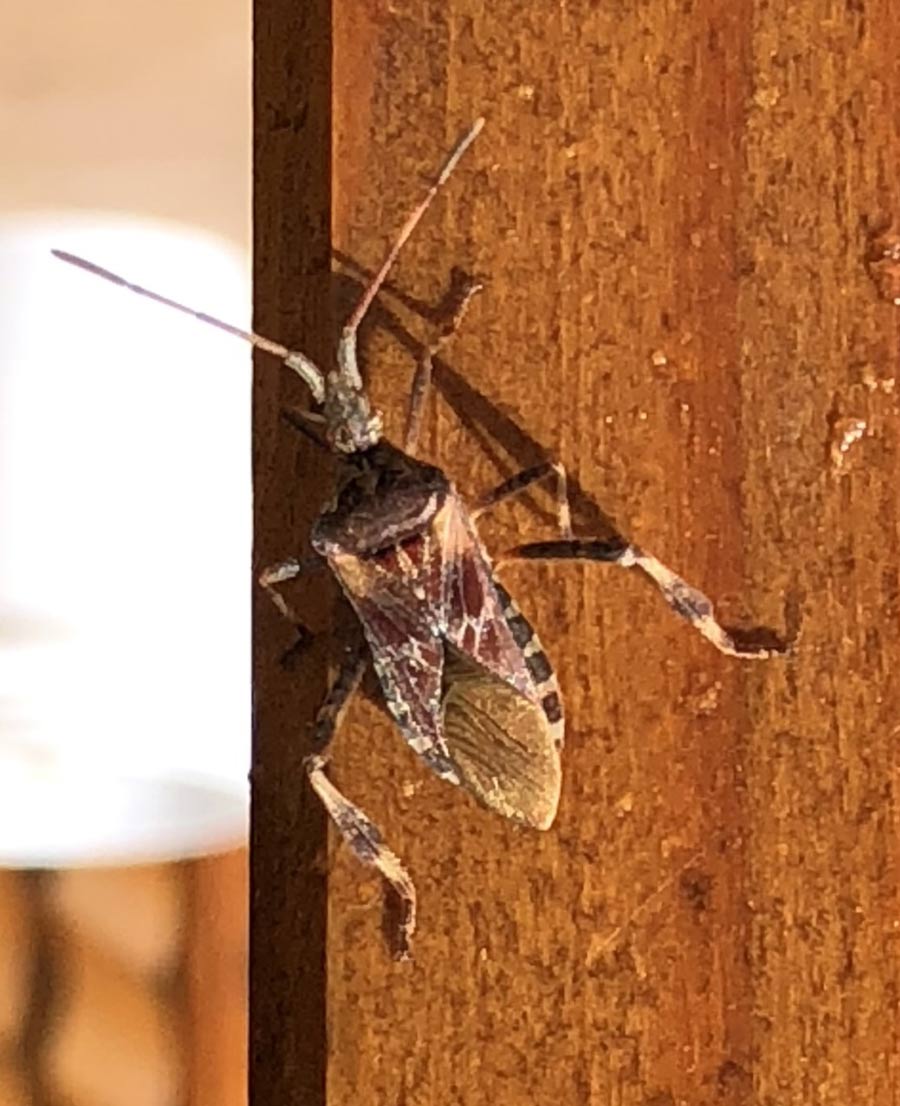What’s bugging you? What gardeners need to know about the Western Conifer Seed bug
Published at | Updated at
One of the most common calls I get this time of the year is about the Western Conifer Seed Bug (Leptoglossus occidentalis). Many people mistake this bug for destructive insects like termites and bark beetles. While the Western Conifer Seed Bug is a nuisance, it does not cause economical or physical damage. Adults are three-quarters of an inch long and brownish on top. The back side of the abdomen is yellow or light orange with five transverse black patches.
In flight, they may sound like bumblebees. The most significant identifying characteristics are the wide, flattened tibia of the rear legs (they belong to the leaf footed bug family) and the light zigzag line across the back halfway down the abdomen when not in flight.
They overwinter as adults under pine bark, in dead and dry Douglas firs, and in hawk and rodent nests. Adults emerge in late May or early June and feed on one-year old conifer cones. Eggs are laid on host conifers and hatch about 10 days later. The nymphs (immature forms) feed on developing cones of conifers with some insignificant feeding on the needles. By August, they have gone through five nymph stages and are fully grown adults. At the onset of cold weather, adults look for overwintering sites.
The health of your coniferous trees is not compromised by the presence of the western conifer seed bug as they feed primarily on the seeds, not the trees themselves. The Western conifer seed bug’s consumption of Douglas fir seeds and seeds of various pine results in a substantial loss of seed crop. Thus, its direct economic impact is a reduction in the quality and viability of conifer seed crops.
Although they do not bite or sting, it causes concern for homeowners as they seek warmer places to overwinter. Homes, shops, offices, and laboratories are the usual places they seek out to escape freezing temperatures which is why we see them so often this time of year.
The best control for the western conifer seed bug is mechanical exclusion. Several strategies to prevent the insect’s invasion include replace loosely fitting screens, windows, and doors; caulk gaps around door frames, window frames, and soffits; caulk cracks behind chimneys and underneath the wood fascia; screen fireplace chimneys and attic and wall vents.



In the Garden is sponsored by ProPeat, which is dedicated to delivering solutions for any of your professional fertilization needs. Whether you need to reduce the harm to soils and the environment, or you're interested in the latest nitrogen, carbon and biochemical technologies, ProPeat is the perfect fit.


